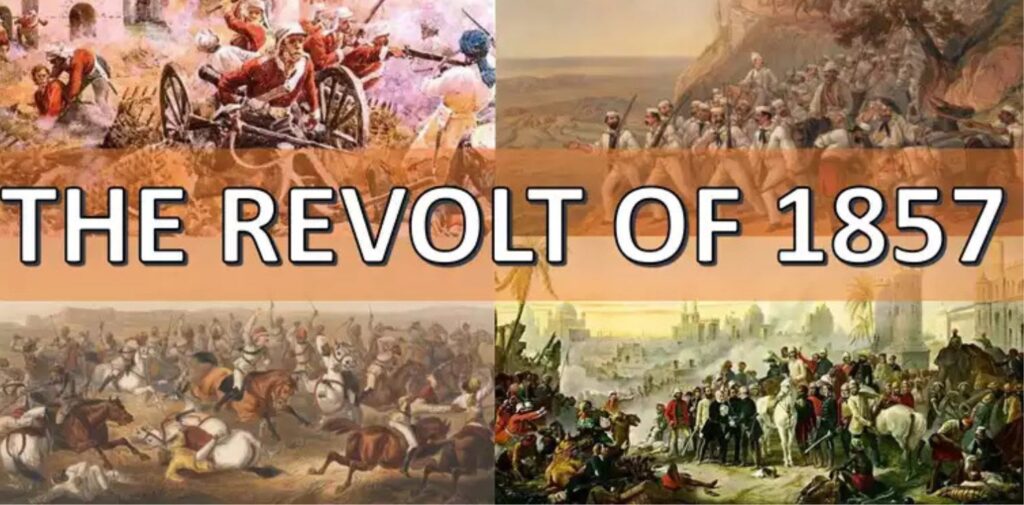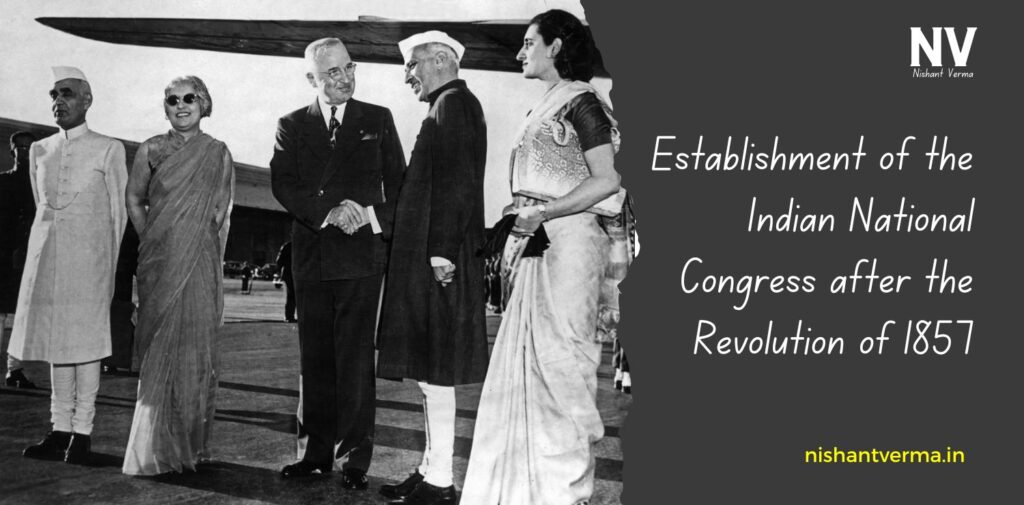The establishment of the Indian National Congress (INC) in 1885 was a pivotal moment in Indian history. While it later became the driving force behind the Indian independence movement, its founding was a response to a variety of factors, notably the British desire to maintain control over India after the upheaval of the Revolt of 1857, also known as the Indian Mutiny or Sepoy Rebellion. This article delves into the reasons why the British chose to establish the Indian National Congress, examining the context of the 1857 revolt and the subsequent changes in British policies towards governance, reform, and engagement with Indian elites.
Background to the Revolt of 1857
The Revolt of 1857 was the first major rebellion against British colonial rule in India. It began as a mutiny among Indian soldiers, known as sepoys, but soon evolved into a widespread revolt that spread across northern and central India. It involved various sections of Indian society, including peasants, artisans, local rulers, and sections of the elite. The causes of the revolt were multifaceted: socio-economic grievances, religious and cultural insensitivity of the British, the introduction of unpopular policies such as the Enfield rifle, and the general resentment of British colonial rule. The immediate spark was the issue of the greased cartridges used by sepoys, which were rumoured to be coated with animal fat, offending both Hindu and Muslim soldiers.
The revolt, although widespread and intense, ultimately failed due to disorganization, lack of coordination, and the overwhelming military strength of the British. The British responded with brutal repression, and by 1858, the British East India Company’s rule was replaced by direct British control under the British Crown.

Aftermath of the Revolt: British Reforms and Consolidation of Power
The failure of the 1857 rebellion forced the British to rethink their approach to governing India. The British Crown took direct control over India from the East India Company, signalling a shift in the structure of governance. The British realized that to prevent another revolt and maintain their grip on India, they would need to both consolidate their control over the region and adopt a more inclusive approach to Indian governance, particularly engaging with the Indian elite.
Need for a New Political Strategy
Before 1857, British rule in India had been characterized by the East India Company’s reliance on a relatively small number of British officials, who often ruled in an autocratic and insular manner. After the mutiny, however, it became clear that the British could no longer ignore the aspirations, grievances, and influence of the Indian elite. While British officials continued to view India as a colonial possession to be exploited, they also understood that maintaining peace and stability in such a vast and diverse country required the cooperation of local leaders, including Indian aristocrats, landowners, and educated professionals.
It was against this backdrop that the British began to reassess their policies toward Indian society. The introduction of reforms aimed at improving governance, education, and the legal system was designed to integrate the Indian elite into the colonial administration. The British sought to create a class of Indians who could be loyal to the colonial government, act as intermediaries between the rulers and the ruled, and prevent the rise of another mass revolt.
One of the most important steps in this direction was the introduction of reforms that allowed more Indians to participate in governance. For example, the Indian Civil Services were opened up to Indians to a limited extent, and some Indians were included in advisory councils. However, these reforms were cautious and limited, as the British did not want to relinquish their control. Despite these changes, the Indian elite, which had largely been loyal to the British, began to seek more representation and a greater role in governance.

British and the Formation of the Indian National Congress
The British saw the potential for the formation of a political organization that would provide a platform for Indian elites to express their grievances and aspirations, without threatening British authority. The Indian National Congress was conceived as a forum where educated Indians could engage in dialogue with the British government, express their concerns, and contribute to the development of India within the confines of the colonial system. The British believed that this would allow them to placate potential discontent while keeping any more radical movements under control.
The Indian National Congress was founded in 1885 by Allan Octavian Hume, a retired British civil servant, with the support of prominent Indian leaders such as Dadabhai Naoroji, Surendranath Banerjee, and others. Hume was a key figure in its formation, as he understood both the Indian political landscape and the British perspective. The British government, though initially cautious, permitted the formation of the Congress because it was seen as a way to moderate the growing nationalist sentiments and provide a controlled outlet for political participation.
British Intentions Behind the Formation of the Congress
- Divide and Rule Strategy: The British were well aware that unity among Indian groups was a threat to their rule. The Indian National Congress, as originally conceived, was to be an organization where Indian elites from different regions, languages, and religions could discuss their grievances. This was in line with the British policy of “divide and rule,” where they sought to prevent any unified opposition by fostering divisions along regional, religious, and ethnic lines. By creating a platform where educated Indians could voice their concerns, the British hoped to ensure that no single group would become powerful enough to challenge their authority.
- Co-optation of Indian Elites: The British aimed to co-opt Indian elites into the colonial structure. By including prominent Indian leaders in the Congress and offering them a semblance of political influence, they hoped to gain the loyalty of these elites. This was a way of ensuring that the Indian upper classes, who controlled vast landholdings and wealth, remained supportive of British rule. The British were careful not to extend too much political power to the Congress but instead saw it as a forum for dialogue and not a revolutionary body.
- Preventing Radicalism: The Revolt of 1857 demonstrated the potential for widespread discontent. The British did not want to repeat the mistakes of the past and feared another large-scale uprising. By allowing Indians to organize through Congress, the British hoped to channel any growing nationalist sentiments in a controlled manner, preventing the rise of radical, revolutionary movements that might directly threaten their rule.
- Gradual Political Reform: The British recognized the value of education in creating a class of Indians who could contribute to the administration, governance, and economic development of the country. The Congress became an avenue for the British to offer a gradual increase in Indian participation in governance, without threatening their overall control. Over time, it was hoped that the Congress would serve as a political training ground for future Indian leaders, who would be loyal to the Crown.

The Congress’ Initial Role
At its inception, the Congress was not a revolutionary organization, but rather a moderate political body seeking reforms from the British government. Its early leaders, though passionate about Indian development, were largely loyal to the British Crown. They demanded more Indian representation in government and greater attention to the social and economic issues facing the Indian masses, but they were not yet advocating for independence. The Congress focused on issues such as economic exploitation, the need for educational reforms, and representation in the legislative councils.
However, as the decades passed, the nature of the Congress began to evolve. The growing political consciousness of the Indian people, spurred by the rise of educated middle-class elites and the increasing awareness of Indian grievances, led the Congress to become more assertive. By the early 20th century, the Congress began to call for greater autonomy, and eventually, independence from British rule.
Conclusion
The British decision to establish the Indian National Congress was shaped by the aftermath of the Revolt of 1857 and the changing political realities in India. Faced with the challenge of consolidating their power after the mutiny, the British sought to maintain control by creating a platform where Indian elites could voice their concerns while avoiding any major threats to British rule.
The Congress, in its early years, functioned as a forum for moderate reform, but over time it evolved into the leading force for Indian independence. The establishment of the Congress thus represents a critical moment in the history of British colonial policy, one that ultimately paved the way for the rise of a powerful nationalist movement and the eventual independence of India in 1947.




